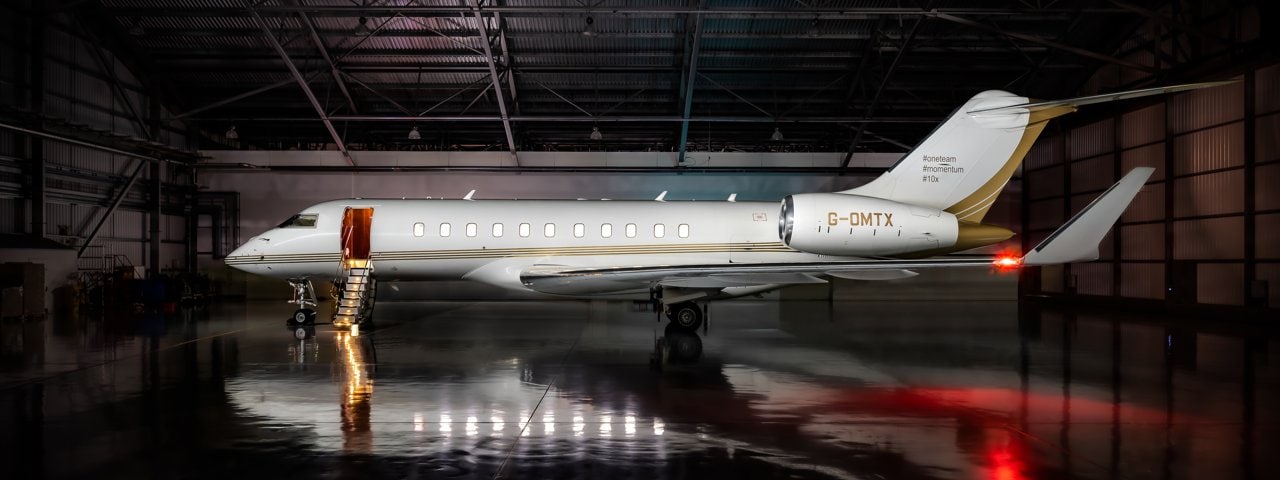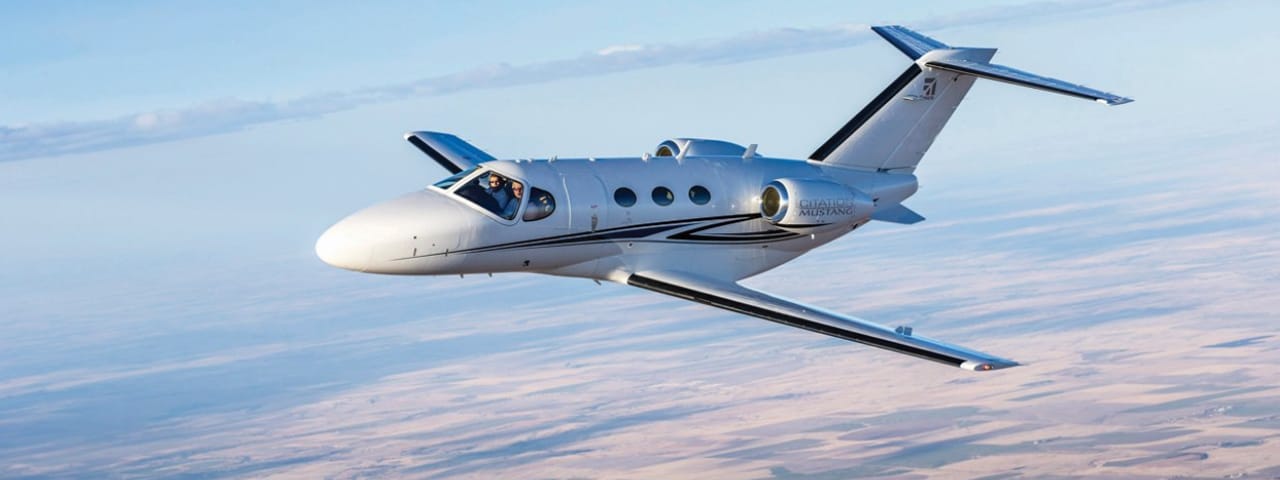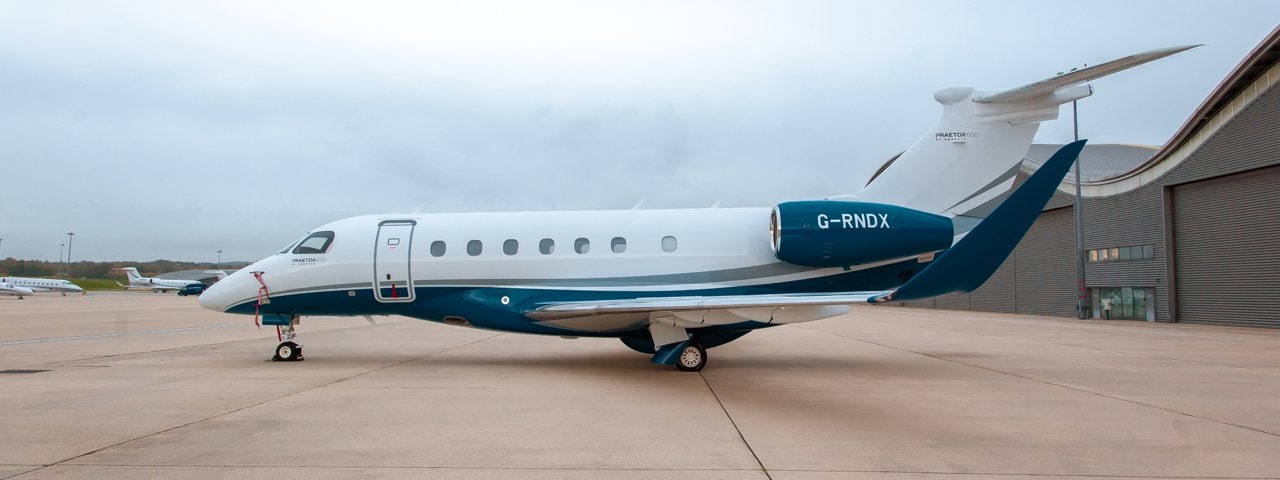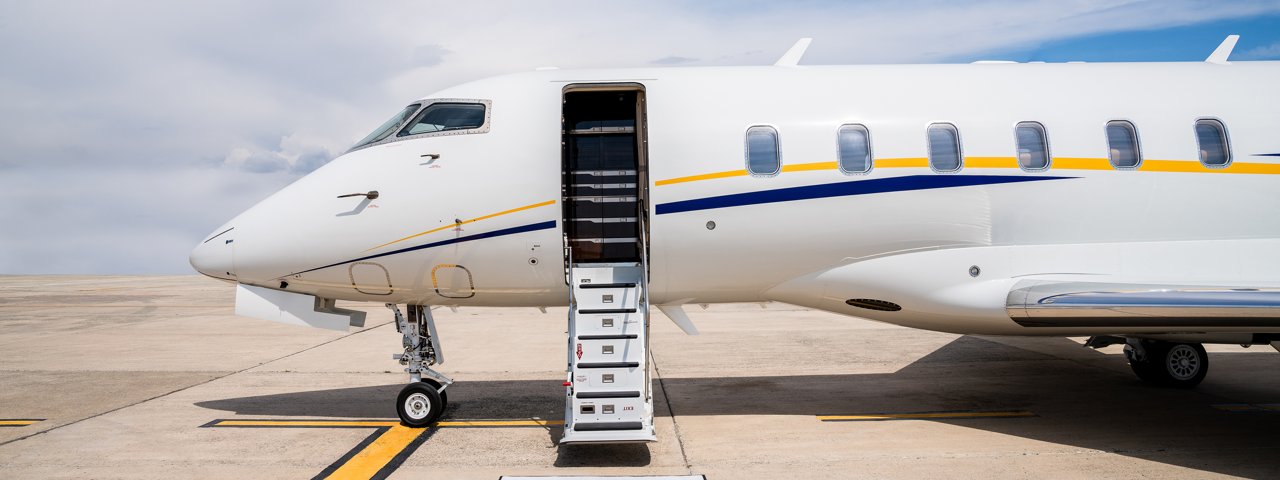What Does a Private Jet Cost?
Private jet owners have the freedom to fly around the world at their whim, jetting off for a Caribbean getaway, city-hopping across the United States, or flying their boardroom to a last-minute business meeting. Without commercial flight schedules and crowded airports to contend with, flying becomes luxurious, efficient, and hassle-free. But what does a private jet cost?
If you want to fly by private jet, ownership is just one option. For more information on how much it costs to charter a private jet, read our article on how much it costs to book a private jet charter in the USA. Or, contact one of our experienced private jet charter experts by inquiring below:
The cost of flying private
The answer to the question, “What does a private jet cost?” is more complicated than you may think. Whether you’re purchasing your own plane, leasing, or chartering a jet for a single trip, many factors affect the price of flying privately.
We unpack each of these options and explore the costs associated with them below.
Buying a private jet
Buyers should first consider what class of jet best suits their requirements. There are piston-powered and turboprop aircraft as well as light, midsize or super-midsize, heavy or ultra-long-range heavy jets, or luxury executive airliners. Each class represents different sizes and performance, impacting the overall price.
The most compact options are turboprops and light jets, which are designed for short, regional flights. Travelers looking for enough space to move around the cabin should opt for a midsize or super-midsize jet, both of which typically seat seven to nine passengers. For more space and elevated luxury, choose a heavy jet, ultra-long-range heavy jet, or a luxury executive airliner. These models have large cabins, luxury amenities, and the option to travel with multiple flight attendants.
While size often dictates the number of passengers an aircraft can accommodate, it’s also an indicator of range. Most light jets have a shorter range than mid-size jets, and they need to stop to refuel on longer flights, which can add time to the journey. On the other hand, a heavy jet usually has higher fuel costs and is usually not the most cost-effective option for a short private flight.
You’ll also need to consider whether you’d like a new or pre-owned aircraft. For example, a new Cessna Citation M2 (a light jet) can cost upwards of $5 million, while a pre-owned version can cost $4.2 million. A new super mid-size Bombardier Challenger 350 can cost around $27 million, while used models can cost between $18 and $22 million.
A new Gulfstream G650ER ultra-long-range heavy jet can cost as much as $75 million, whereas the average price for a used model is around $53 million. In the same class, a 13-seat Bombardier Global 6500 can cost $58 million new and as low as $43 million for a 2019 model.
New aircraft have the highest price tag, so if you’re considering a pre-owned jet, be sure to take into account its lifespan. An aircraft’s lifespan is typically measured in pressurization cycles rather than physical age. Pressurization cycles are the number of times an aircraft has been pressurized, as this places stress on its fuselage and wings and causes degradation over time. Flight hours are also taken into account as this will affect the amount of time that a plane spends pressurized.
Customization costs
One of the perks of ownership is the freedom to outfit the cabin of your private jet exactly as you'd like. This may mean adjusting the number of seats with the manufacturer so it fits your requirements perfectly or splurging on an extravagant private jet interior after you’ve had it delivered.
The most lavish cabins feature custom leather upholstery, designated zones for bedrooms, and top-tier aviation entertainment systems. The sky’s the limit for private jet customizations, and these interiors can easily reach hundreds of millions of dollars. To learn more, read our article on the price of a custom private jet interior.
Operating costs
The costs don’t stop there, though. The price of a luxury private aircraft – whether it’s new or pre-owned – is not small. The operating costs of a private jet include:
- Maintenance: This includes routine maintenance to ensure an aircraft is in optimal condition, as well as unexpected costs such as faulty components. The costs to ensure your private jet is properly maintained can run from hundreds of thousands up to millions of dollars a year, depending on the private jet that you own.
- Fuel costs: Fuel costs will vary depending on how much you fly, but it goes without saying that jet fuel is not cheap, and costs can spike unexpectedly due to various global factors.
- Hanger and storage fees: While it’s possible to cut costs and park your aircraft outdoors at an airport, exposure to the elements will dramatically affect its lifespan. In order to avoid this damage, you’ll need to pay additional hanger and storage fees to extend the life of the aircraft.
- Crew costs: From maintenance to flight crew, you’ll need to cover various personnel costs to ensure your aircraft is operable and ready to fly.
- Insurance: Private jet insurance can vary greatly depending on the type of aircraft, its use, the qualifications of the crew, and various other criteria, bringing insurance costs up to $500,000 annually.
Should you purchase a new or pre-owned aircraft?
When deciding to purchase a new or pre-owned aircraft, each decision has different criteria that you’ll need to weigh up.
You’ll likely be interested in purchasing a brand-new jet if you:
- Want the latest features.
- Want a warranty to cover maintenance for the first few years of its lifespan.
- Increase your chances of the aircraft not requiring regular maintenance in the first few years of ownership.
- Want a certain aircraft configuration.
- Are willing to wait for delivery.
On the other hand, you’ll likely be more interested in purchasing a pre-owned jet if you:
- Want to reduce your upfront costs.
- Need to own a private jet sooner rather than later.
- Are happy to make the aircraft available for lease or charter when you are not using it.
- Won’t experience major disruptions to your schedule if the aircraft is undergoing unexpected maintenance.
However, it’s also important to know that buying new or pre-owned jets isn’t your only option. If you’re interested in gaining access to a private jet, you can also consider fractional ownership, private jet leasing, and private jet charter.
Fractional jet ownership
As the name suggests, fractional ownership, also known as shared or partial aircraft ownership, is a scheme whereby you split the cost of owning a private jet with other people or businesses.
Fractional ownership usually ranges from a 1/16th share to a 50% share of a private aircraft, with ‘owners’ given an allotted amount of occupied hours per year that they can use to fly the aircraft. This means they avoid paying for an entire jet and only pay a fraction of the service, maintenance and crew fees.
A fractional ownership program usually ranges between 50 and 400 hours of flying time and requires signing an aircraft management agreement lasting for multiple years. So, while fractional jet ownership may cost less than owning your own private jet, it still represents a significant commitment.
Leasing a private jet
Another option to consider is leasing a private jet. This option essentially eliminates the large upfront costs and the depreciation risks associated with private jet ownership and fractional sharing. Another benefit of leasing is that you can choose to renew the lease if you’re happy or choose another lease if you’re interested in another aircraft.
Depending on the type of aircraft, you’ll need to pay a deposit, a monthly management fee, and a lease payment, as well as an hourly rate for using the private jet. The type of lease may also have additional costs. For example, a dry lease means that you’ll need to pay additional costs for pilots, cabin crew, maintenance, insurance, and other costs, while a wet lease will have these items included at a higher cost.
Learn more about our short and long-term private jet leasing options.
Chartering a private jet
If the prices of the previous two options aren't quite within your reach, or if you don't fly regularly enough to warrant the high running costs of ownership, don’t worry – you can enjoy flying privately by chartering a private aircraft.
Chartering a private jet is a far better option for the majority of travelers as it offers all the convenience of private jet travel without the ongoing commitments associated with ownership. While private jet travelers also pay costs such as fuel, airport handling fees, landing fees, cabin crew, and passenger taxes, you only pay for the costs associated with your flight.
When chartering a private jet, travelers can also choose the ideal aircraft for each individual journey they make. For example, if you need to make a short hop from Boston to Nantucket with your family, it would be more cost-effective to complete that flight in a light jet such as the Cessna Citation Ultra rather than a mid-size jet like the Embraer Legacy 600.
You also need to consider that not every aircraft can accommodate all routes. Small jet owners have to take regular fuel stops, charter a larger aircraft or book a commercial ticket for long-haul flights. Additionally, some planes require a longer runway than others in order to land, which means that airports with shorter runways, such as Gustaf III Airport in St. Barts and Courchevel Airport, aren’t suitable for certain planes. When flying by private jet charter, travelers can rest assured that their plane will always be suited to their unique requirements.
Should I consider chartering a private jet?
In summary, here are some of the perks that you can experience when chartering a private jet:
- No need to have the money to purchase a private jet outright.
- No need to worry about ongoing costs, such as maintenance and operational costs.
- Choose the perfect aircraft to suit your travel requirements for every flight.
- Only pay for the cost of the flight.
- No recurring time and financial costs in regard to managing the plane, either yourself or through an aircraft management company.
- No need to worry about the declining value of your jet.
What are empty-leg flights?
Private jet charter flyers can also take advantage of empty-leg flights, which become available when an aircraft flies back to base or on to another location for its next booking. Empty legs offer an extraordinary discount – sometimes as much as 75% off the cost of a regular charter – as the plane would otherwise be flying empty. To learn more about empty-leg flights, read our article on the cheapest private jet charter trips.
Find out more about private jet charter with Air Charter Service
If you have any questions about the cost of arranging a private jet charter, our specialists can provide you with all the help you need. With more than 30 years of experience in the air charter industry, we will source the perfect aircraft for your unique requirements and take care of the entire charter process from start to finish.
Contact us to find out more about how we can help you find the perfect solution for your charter requirements.
- No need to have the money to purchase a private jet outright.
- No need to worry about ongoing costs, such as maintenance and operational costs.
- Choose the perfect aircraft to suit your travel requirements for every flight.
- Only pay for the cost of the flight.
- No recurring time and financial costs in regard to managing the plane, either yourself or through an aircraft management company.
- No need to worry about the declining value of your jet.
What are empty-leg flights?
Private jet charter flyers can also take advantage of empty-leg flights, which become available when an aircraft flies back to base or on to another location for its next booking. Empty legs offer an extraordinary discount – sometimes as much as 75% off the cost of a regular charter – as the plane would otherwise be flying empty. To learn more about empty-leg flights, read our article on the cheapest private jet charter trips.
Find out more about private jet charter with Air Charter Service
If you have any questions about the cost of arranging a private jet charter, our specialists can provide you with all the help you need. With more than 30 years of experience in the air charter industry, we will source the perfect aircraft for your unique requirements and take care of the entire charter process from start to finish.
Contact us to find out more about how we can help you find the perfect solution for your charter requirements.
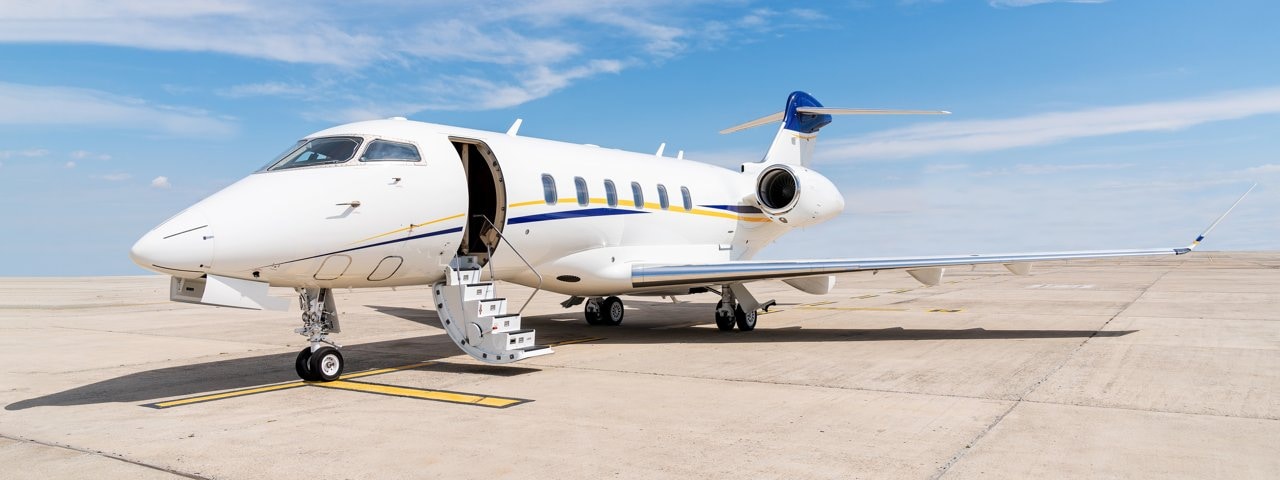
 There are many costs associated with private jets and flying privately that people may not be aware of. We unpack all these expenses and all the options you have when it comes to private jets so that you have a clear understanding of the costs involved.
There are many costs associated with private jets and flying privately that people may not be aware of. We unpack all these expenses and all the options you have when it comes to private jets so that you have a clear understanding of the costs involved.


